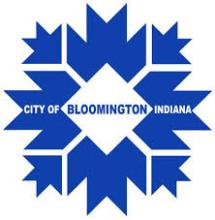
Fast, affordable Internet access for all.

“The Gateway to Scenic Southern Indiana” could soon be the gateway to high-speed Internet access in Indiana. The city of Bloomington, Indiana, has undertaken several projects and events in order to empower the community to find solutions to its connectivity problems.
The city of Bloomington issued a Request For Information (RFI) for a Fiber-to-the-Home (FTTH) network on March 31, 2016. City leaders have taken this next step in order to make high-speed Internet access affordable and available to all of the city’s 80,000 people.
A Bull’s Eye: The RFI
Unlike the often-mentioned Request For Proposal (RFP), an RFI does not establish a plan of action. Instead, the RFI creates a procedure for Internet service providers (ISPs), contractors, and other companies to provide information on how they would create a network to best meet the needs of the city. The city's deadline to answer any questions from interested firms is April 28th and RFI responses are due on May 12th.
Rick Dietz spoke with us the day after the city released the RFI. Dietz is the Director of ITS for the city of Bloomington. He described how the city had come to its decision to pursue a community network. The mayor and city council hired a consultant and held a symposium on high-speed networks, before releasing the RFI.
Dietz repeated the three key components that are integral to the RFI:
Without these principles, a new network will likely not be right for Bloomington. The RFI calls for any incumbent providers, local providers, or others to describe their ideas to achieve these goals, whether through a private public partnership or not. The City has taken a number of steps to enable this process to go smoothly.
The February Symposium
In February, the city held a symposium on next-generation networks. It brought together local and national experts in fiber networks. A recording of the entire event is available on YouTube at “Bloomington Symposium on Next-Generation High Speed Networks.” Speakers included Blair Levin from Gig.U, Erin Deacon from KC Digital Drive, and several others who described how Bloomington would benefit from a fiber network.

Throughout the event, city leaders and community members learned much about the opportunities for high-speed Internet access in Bloomington. Mayor John Hamilton, a long-time advocate for better connectivity in Bloomington, ended the symposium by announcing the plans to release the RFI:
“Today is a beginning not an ending. We have a lot of work ahead -- my head is buzzing and swimming in a good way. There has been a great deal of information and energy and activity a lot depends on our doing this hard-work together.”
The RFI makes reference to several key assets, such as Bloomington Digital Underground (BDU), that the city could use as they develop the project. BDU is a system of existing city-owned conduits and fiber that could facilitate the creation of a new municipal network.
New Century, New Approach
Back in 1999, the City Council and the Mayor’s Office began to create a comprehensive plan to install fiber-optic cable and conduit throughout the city’s rights-of-way. Whenever the city begins a construction project, such as improving roads or sewers, they add extra conduit for future fiber-optic cables.
BDU also led to the construction of a fiber-optic ring around the center of Bloomington. It connects the main city buildings as well as some schools. In fact, the city installed more fiber than then needed in order to make extra capacity available to private entities or for future projects, such as the one envisioned in the RFI.
Confidence and Optimism
With the RFI finally released, the idea as suggested by the BDU project, now moves one step closer to reality. As Mayor Hamilton reminded the audience at the beginning of the symposium in February:
“We do not have the digital network we need right now, and we certainly don't have the network we will need in 10 years. For 200 years, we've faced the future with confidence and optimism, and we should do the same now.”
